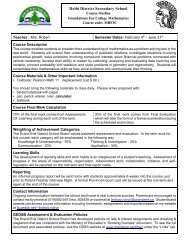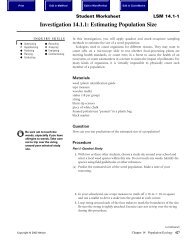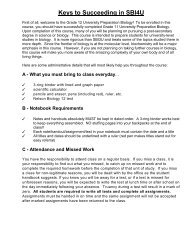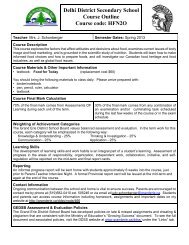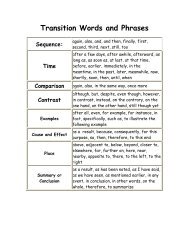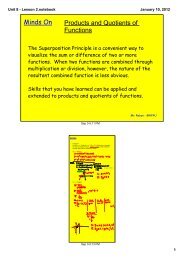Chapter 11.pdf
Chapter 11.pdf
Chapter 11.pdf
- No tags were found...
You also want an ePaper? Increase the reach of your titles
YUMPU automatically turns print PDFs into web optimized ePapers that Google loves.
SCIENCEeverywhereSelf-AdjustingGlassesThe man in this photograph iswearing glasses that correct hisblurry vision. The unusual thingis that he adjusted his ownlenses without the help of anoptometrist in determining hislens prescription. In fact, overone billion people in the worlddo not have access to anoptometrist. Low-cost glassesthat can be adjusted by thewearer may be part of thesolution for making good quality,low-cost vision correction areality for the whole world.This pair of self-adjusting glasses is constructed by sandwiching a fluid-filled sacinside a flexible plastic lens. More fluid means a thicker lens and a strongercorrection in the glasses. To make an adjustment, the wearer uses a small syringeto add or remove the fluid, and a small screw to lock the amount of fluid in thelens. One design hurdle is finding a way to produce the glasses in bulk cheaply.Another difficulty is the bulky frame that is currently needed. Dr. Silver and othersare working to overcome these difficulties.The inventor of self-adjusting glasses isJoshua Silver, a professor at Oxford Universityin England. Dr. Silver wondered whetherpeople could correct their own vision if theycould manually adjust the focussing power ofthe lenses. This would be just like anyonefocussing a camera or a pair of binoculars. By2008, Dr. Silver had already seen 30 000pairs of his self-adjusting glasses delivered topeople in 15 developing countries. By 2020,he would like to see 100 000 pairs distributedannually at a cost of less than $2 per wearer.Ray diagrams model the behaviour of light in mirrors and lenses.463



